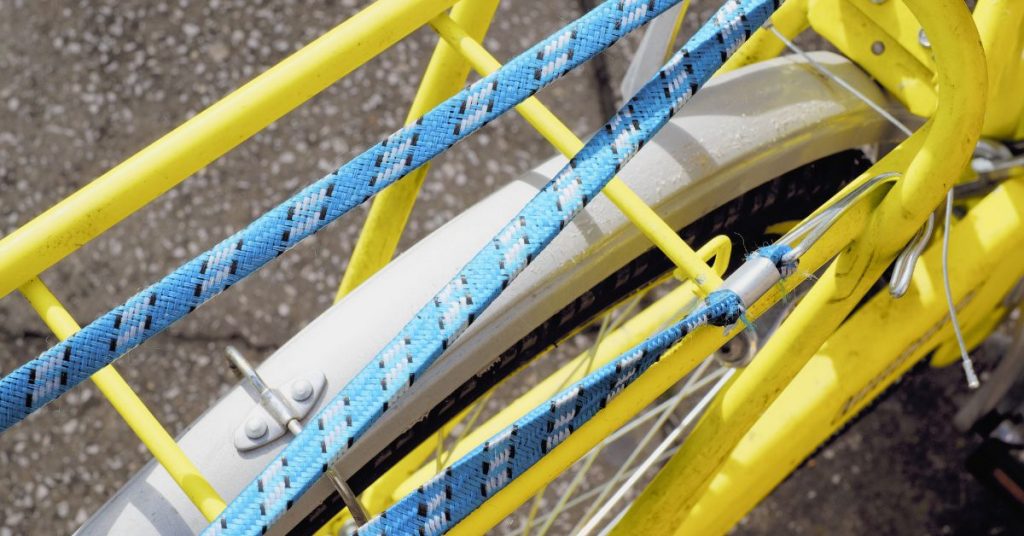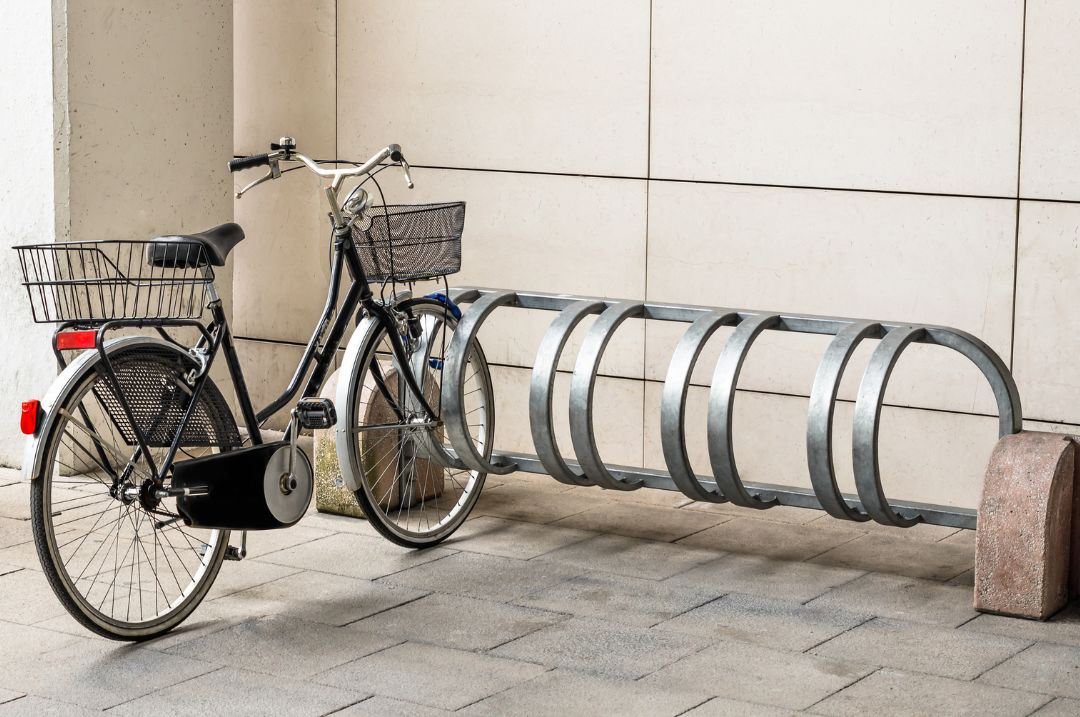If you are a bike commuter, you have probably heard of the bike rack. This component has become an accessory essential for many bicycles, offering convenience and versatility for cyclists who wish to carry luggage, goods or other items during their commute.
In this article we will understand what a rack is, what it is used for, the benefits it offers, the different types, and how to properly mount them on your bicycle.
What is a roof rack and the benefits it offers
A bike rack is a lightweight and sturdy metal structure designed to be mounted on the rear or front of a bicycle. Its main function is to provide a space for carrying luggage, bags, backpacks or other items during bicycle trips.

This accessory is an indispensable part of the bike gear and has become especially popular among urban cyclists and commuters who want a practical solution for carrying their belongings without having to wear a backpack.
The use of a roof rack offers several advantages:
- Freedom of movement: eliminates the need to wear a backpack , allowing greater freedom of movement. It also contributes to pedaling comfort; in fact, the rack distributes weight evenly across the bicycle, improving rider comfort compared to using a heavy backpack.
- Load Capacity: increases the load capacity of the bicycle, allowing heavier or bulkier items to be carried.
- Stability: contributes to the stability of the bicycle when loaded, improving control while riding.
- Convenience: makes it easy to carry purchases, sports equipment, or any other items you may need to take with you.
The materials and types of bicycle racks
Bicycle racks are made of various materials that combine lightness, strength , and durability, and the choice depends on the cyclist’s personal preferences, the type of bicycle, and theintended use of the rack
The materials used in the construction of roof racks are:
- Aluminum: is one of the most popular materials. It is lightweight, corrosion resistant and offers good structural strength. In addition, aluminum is flexible enough to allow the production of variable and sophisticated designs.
- Steel: is a strong and durable material. Steel racks tend to be heavier than aluminum racks, but they offer greater carrying capacity.
- Titanium alloys: titanium is known for its light weight and resistance to corrosion and weathering.
- Other materials: materials such as carbon fiber or reinforced plastics can offer excellent strength, while wood might add an aesthetic touch. The disadvantage of using these materials is that they can be more expensive than others.

Then there are different types of roof racks, designed to meet specific needs:
- Rear rack: the most common type, mounted on the rear of the bicycle.
- Front rack: less common, but useful for those who want to distribute weight differently or need quicker access to loads.
- Universal rack: designed to fit a wide range of bicycles, offering more flexibility. These can be adjustable in width, height or angle to fit different frame shapes.
- Integrated rack: some bicycles are designed with racks integrated into the frame, providing a sleek and aerodynamic solution.
Roof rack without attachments? The solutions and accessories to be used
Most roof racks require a specific attachment to be securely attached to the bicycle frame.
If your frame does not have prearranged attachment points, however, there are some alternatives you might consider, e.g., adjustable clamps or mounts, strap systems, various adapting accessories such as additional clamps and adjustable brackets, and fork clamps for front racks.
If you cannot find the right device, in some cases you may be able to design a DIY solution that fits your specific frame.
How to mount the bike rack
Before buying a rack, be sure to measure your frame and check for compatibility with the model you are considering. Also, consult the manufacturer’s instructions to make sure you install the rack correctly and safely.
Mounting a roof rack may vary slightly depending on the model, but generally, the process includes the following steps:
- Choose the right model: make sure the rack is compatible with your bike and has the desired load capacity.
- Tools needed: you will need a wrench, an Allen wrench and, in some cases, a screwdriver.
- Positioning: place the rack on the rear of the bicycle, aligning the mounting holes with those on the frame.
- Fastening: Use the screws and bolts supplied with the rack to secure it firmly to the frame. Be sure to tighten the screws well to ensure stability.
- Adjustments: Some models allow adjustments to fit your bike size or loads, so make the necessary adjustments.
- Check stability: Make sure the rack is secured and does not have excessive movement.
With the rack properly fitted, you are ready to explore the roads with a practical and convenient carrying solution on your bike.
Tips for proper use of the roof rack
Using a bicycle rack is relatively simple, but there are some important considerations to keep in mind to ensure safe riding and proper transport of loads.
Here is how you can properly use a bike rack:

Proper installation of the roof rack
Make sure the rack is properly mounted on your bicycle. Check that all screws are tightened and that the rack is stable.
Weight and load capacity
Always respect the weight limit of the rack. This information is generally stated by the manufacturer and may vary depending on the model. Exceeding the maximum recommended weight could compromise safety and stability…
Balanced positioning
Distribute the weight evenly on the sides of the rack. This helps maintain bicycle stability while riding. Try to avoid unbalanced loads that could affect handling.
Use of straps or lanyards
If you are carrying smaller items, use straps or lanyards to secure the load to the rack. Make sure everything is well anchored to prevent objects from shifting or falling while driving.
Drive carefully
Adapt your driving style to the load you are carrying. The presence of a load can affect the bike’s handling, so ride with caution and pay attention to cornering and braking.
Periodic checks
Before each trip, check that the roof rack is still secure and that all loads are safe. Bindings can become loose over time, so it is important to do regular maintenance checks to ride safely .
Rack compatibility with bags and accessories
If you are using specific rack accessories, make sure they are properly attached and do not interfere with riding or the wheels of the bicycle.
Attention to size
Consider the size of the load in relation to the rack. Make sure the items fit the size of the rack and do not protrude dangerously. Pay attention to bulkier objects so that they do not obstruct your visibility or driving ability.
By following these guidelines, you will be able to make the most of your rack, making it more practical and convenient to carry items during your bike commute.
Mount the rack on your bike and ride with Bikeit
The bicycle rack is a practical and versatile accessory that enhances cyclist convenience. Proper selection, installation, and maintenance enable its full benefits to be realized, making the bicycle a reliable companion for all kinds of journeys.
With your new carrier you can carry all the items you need to organize your next bike trip, so what are you waiting for?
Choose the itinerary that suits you and leave with Bikeit.




